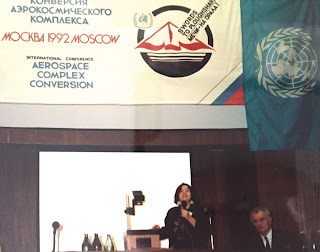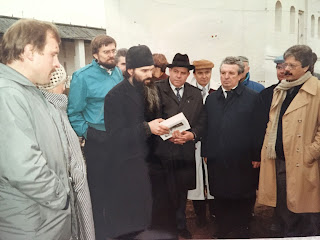 |
| A Mark II Series 1 Halifax bomber operating out of the 10th Squadron in Melbourne, Yorks., UK. |
He was one of seven crew members on the plane, and it was one of two planes that crashed the same night.
Uncle Willem knew the plane well because he had been a flight instructor for this plane for the Royal Canadian Air Force (RCAF) before he became a pilot.
Naturally I have been curious about the plane he flew in and how it fared during the war:
- Was this a good plane? Where did it rank in the hierarchy of the air?
- How many sorties were made in this plane?
- What was the experience of 10th RAF Squadron, flying out of Melbourne, Yorkshire?
- What was the experience of all of the RAF Halifaxes during June 1944?
The Halifax Bomber
The Lancaster bomber had a somewhat better reputation, but in June 1944 the Halifax was second only to it. It was a plane of preference. That is, the Mark II version did. The Mark I version had a dangerous tendency to go into an uncontrollable tailspin occasionally under extreme conditions. The tail was improved and the Mark II shook this problem.
The Bomber Command Museum of Canada, provides excellent data on Halifax Sorties and Losses in WWII (1941-1945). It reports that of those who flew for the bomber command at the beginning of WWII, only 10 percent survived. Willem van Stockum, as a mathematician and a flight instructor, would have been intimately familiar with these numbers, as is pointed out in Robert Wack's Time Bomber. Here is what the Museum says about the Halifax bomber crews:
Of every 100 airmen who joined Bomber Command, 45 were killed, 6 were seriously wounded, 8 became Prisoners of War, and only 41 escaped unscathed (at least physically). Of the 120,000 who served, 55,573 were killed, including more than 10,000 Canadians.
Of those flying at the beginning of the war, only ten percent survived. It is a loss rate comparable only to the worst slaughter of the First World War trenches. Only the Nazi U-Boat force suffered a higher casualty rate.
On a single night (the night that Willem van Stockum was downed, June 10, 1944), Bomber Command suffered more losses than did Fighter Command during the entire Battle of Britain.
The loss rate varied greatly as the war progressed and was considerably lower as the end of the war approached in late 1944 and early 1945. For most of the war, the majority of those who entered Bomber Command did not survive. During the RCAF's Halifax operations between March 1943 and February 1944, the average loss rate was 6 percent, producing a mere 16 percent survival rate for a tour of 30 operations.
Yet despite the chilling odds, the flow of volunteers never faltered. The price was known to be enormous, but it was a price which continued to be paid with unquestioning courage. If today it represents a debt which can never be repaid, it is at least a debt which must never be forgotten.Canadian pilot and author Murray Peden said:
The crews faced formidable odds, odds seldom appreciated outside the Command. At times in the great offensives of 1943 and 1944 the short-term statistics foretold that fewer than 25 out of each 100 crews would survive their first tour of 30 operations. [...] Yet the crews buckled on their chutes and set out with unshakeable resolution night after night. They fell prey to the hazards of icing, lightning, storm and structural failure, and they perished amidst the bursting shells of the flak batteries. But by far the greater number died in desperately unequal combat under the overwhelming firepower of the tenacious German night fighter defenders. [Emphasis added.]More Data on Sorties
Dates are based on what the date was at 12:01 a.m. So the night of June 1-2 would be recorded as June 2.
Data on Halifax Bomber Losses, June 1944
Night and Losses
June 2 - 1 down
3 - 15 down out of 105 out (Trappes); none were lost on 119 sorties to coastal batteries
6 - 2 down out of 412 attacking Normandy batteries
7 - 1 down out of 418 attacking French roads and rail
8 - 11 down out of 195 attacking French roads and rail (as Willem predicted, the Germans got wise and were more prepared the next night)
10 - 2 down out of 175 attacking French airfields (the two were shot down over Laval in Mayenne).
Total of 32 down in ten days. For the whole month of June it would be 105 planes down.
105 lost in 5095 sorties was a 2.06 percent loss rate
Since each plane had a crew of 7, that meant 735 dead
Loss Rates for Halifax vs. Other Planes
Lancaster losses can be found here, Halifax losses can be found here. The record of losses for both planes was tragic, but the Halifax seems to have done slightly better than the Lancaster.
Loss Rates for Halifax vs. Other Planes
Lancaster losses can be found here, Halifax losses can be found here. The record of losses for both planes was tragic, but the Halifax seems to have done slightly better than the Lancaster.
For example, in June 1944 the loss rates were:
Mossie (Mosquito) - 7 lost in 1487 sorties for a 0.47% loss rate
Lancaster - 182 lost in 8614 sorties for a 2.11 percent loss rate
Halifax - 105 lost in 5095 sorties for a 2.06 percent loss rate
Mossie (Mosquito) - 7 lost in 1487 sorties for a 0.47% loss rate
Lancaster - 182 lost in 8614 sorties for a 2.11 percent loss rate
Halifax - 105 lost in 5095 sorties for a 2.06 percent loss rate
Since the Lancaster was considered a superior plane, it may have taken more risks...
It would be interesting to have the numbers for the U.S. B-25. We do have:
American heavy bomber, ETO - 520 lost in 28,925 sorties for a loss rate 1.8 percent (ref AAFSD)
American heavy bomber, ETO - 520 lost in 28,925 sorties for a loss rate 1.8 percent (ref AAFSD)




























